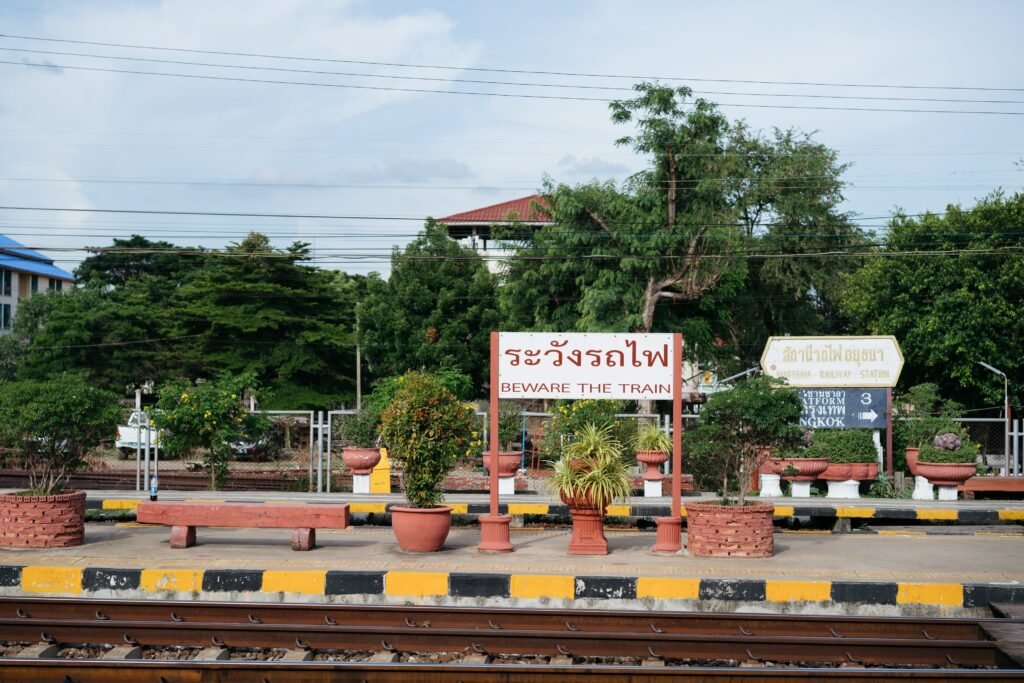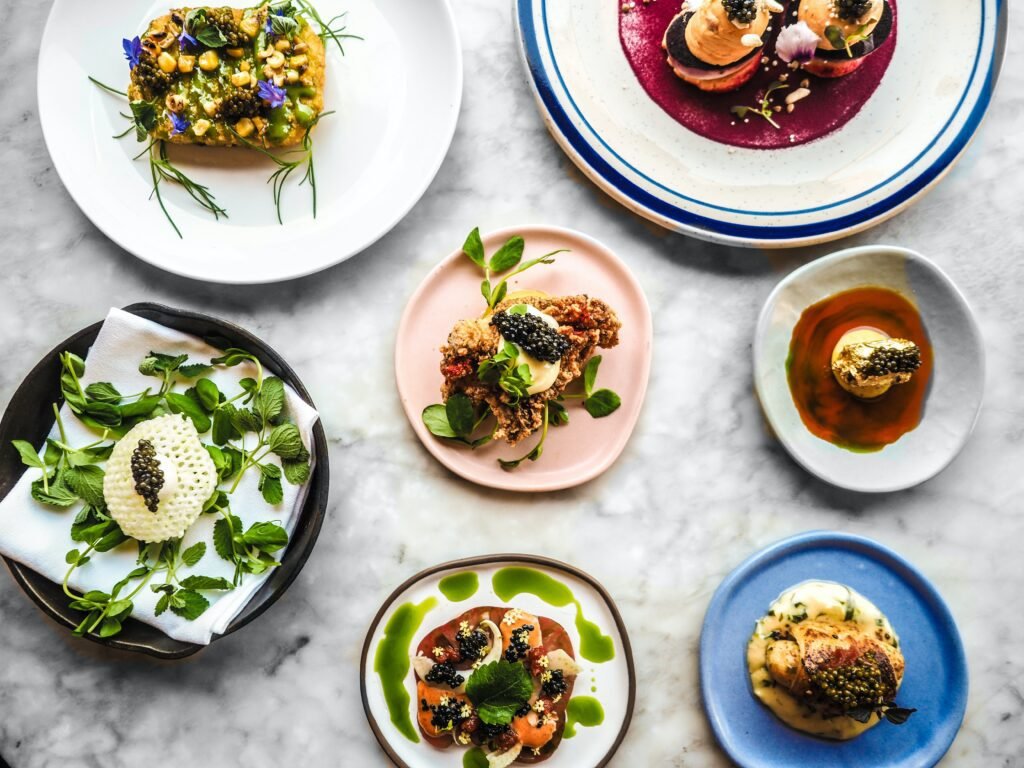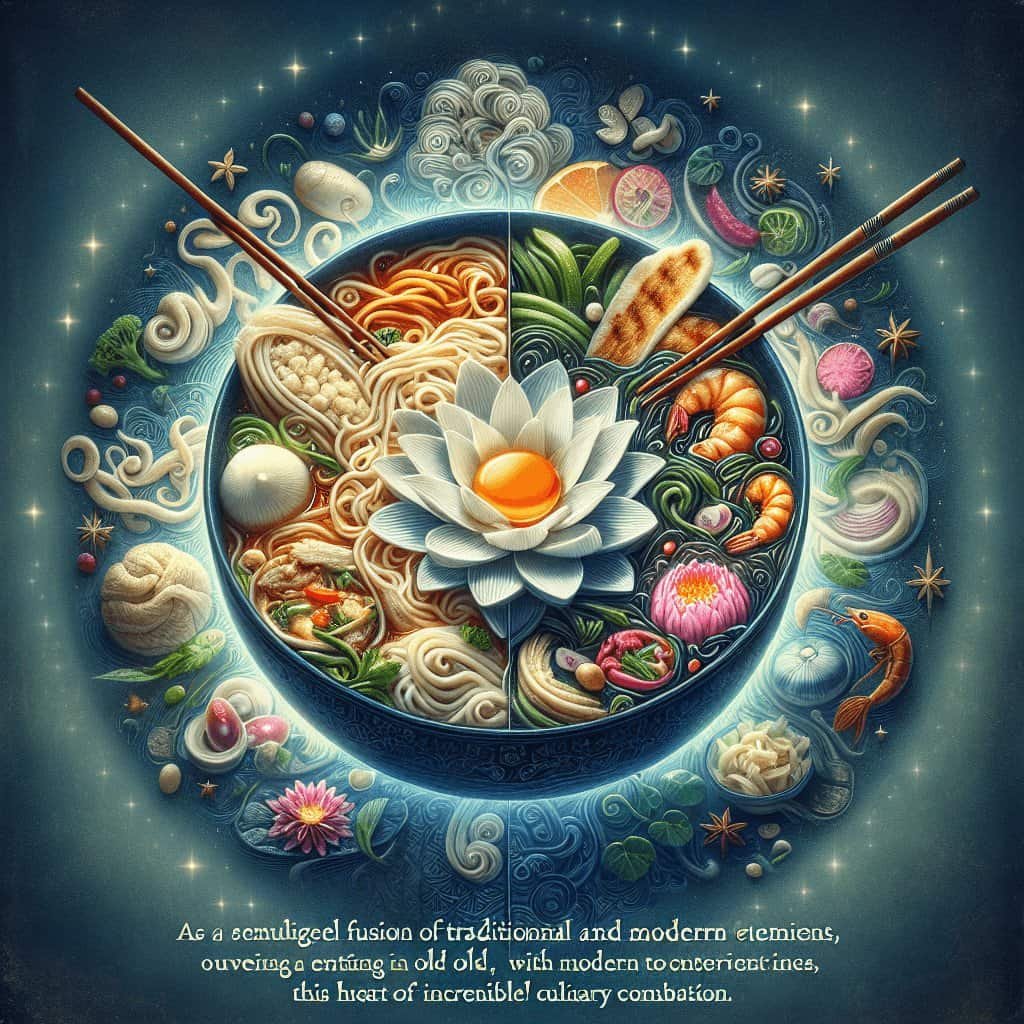Are you tired of making the same old traditional Korean noodle soup recipes? Looking to add a contemporary twist to your beloved dishes? Well, look no further! In this article, we will explore exciting ways to infuse modern flavors into your favorite Korean noodle soup recipes, taking your culinary skills to the next level. Get ready to impress your family and friends with these simple yet innovative ideas!

Exploring Traditional Korean Noodle Soup Recipes
When it comes to Korean cuisine, one cannot ignore the delightful and heartwarming nature of Korean noodle soups. These soups have been a staple in Korean households for generations, captivating both locals and visitors alike with their rich flavors and comforting textures. To truly appreciate these beloved dishes, it is essential to delve into their origins and understand the key ingredients that make them so unique.
Understanding the Origins of Korean Noodle Soup
Traditional Korean noodle soups, known as guksu, have a long history that can be traced back to ancient times. These soups were initially created as a simple and nourishing meal for farmers and laborers during the Joseon Dynasty. Over the years, they have evolved into an integral part of Korean cuisine, with different regions developing their own variations.
Popular Types of Traditional Korean Noodle Soups
Korean cuisine boasts a wide variety of noodle soups, each with its own distinct characteristics and flavors. Some popular types include:
1. Janchi Guksu
Janchi Guksu, also known as “feast noodles,” is traditionally served during festive occasions such as birthdays or weddings. This soup features thin wheat noodles served in a hearty chicken or anchovy broth, garnished with vegetables such as mushrooms, carrots, and green onions.
2. Kalguksu
Kalguksu, meaning “knife-cut noodles,” offers a robust and chewy noodle experience. The handmade noodles are made by skillfully cutting the dough into thin slices, resulting in a rustic texture. This soup is typically served with a savory chicken or seafood broth, accompanied by ingredients like zucchini, potatoes, and clams.
3. Mul Naengmyeon
Mul Naengmyeon is a refreshing cold noodle soup that is particularly popular during the hot summer months. The noodles are made from buckwheat and are served in a tangy and icy beef or radish broth. Topped with cucumber, pear, and a boiled egg, this soup provides a perfect balance of flavors and textures.
Key Ingredients in Traditional Korean Noodle Soups
To truly recreate the authentic taste of traditional Korean noodle soups, it is crucial to understand and appreciate the key ingredients that give these dishes their distinct flavors. Here are some of the essential elements:
1. Noodles
The type of noodle used in Korean noodle soups can vary, ranging from wheat-based noodles like janchi guksu to buckwheat noodles like naengmyeon. These noodles contribute to the overall texture and mouthfeel of the dish.
2. Broth
The broth forms the foundation of any noodle soup. Traditional Korean noodle soups often use chicken, beef, or seafood broth, which are simmered with various aromatics and seasonings to infuse rich flavors.
3. Proteins
Proteins such as chicken, beef, pork, or seafood are commonly added to noodle soups to provide additional taste and texture. These proteins are usually cooked and seasoned separately before being added to the soup.
4. Vegetables and Garnishes
Vegetables play a vital role in Korean noodle soups, adding freshness and color to the dish. Popular choices include mushrooms, carrots, spinach, bean sprouts, and green onions. Garnishes like kimchi, sesame seeds, and chopped herbs are used to enhance the overall flavor profile.

Understanding Modern Flair in Cooking
As culinary tastes continue to evolve, it is no surprise that chefs and home cooks alike are exploring ways to add a modern flair to traditional Korean noodle soup recipes. To achieve this, it is essential to understand the concept of modern flair and how it can be applied in a culinary context.
Defining Modern Flair in Culinary Context
Modern flair in cooking refers to the incorporation of contemporary techniques, ingredients, and presentations into traditional recipes. It involves pushing the boundaries of tradition while still maintaining the essence and integrity of the dish. The goal is to create a harmonious blend of old and new, resulting in a unique and exciting culinary experience.
Blending Traditional and Modern Elements
When adding a modern flair to traditional Korean noodle soups, it is important to strike a balance between honoring the roots of the dish and introducing innovative elements. By blending traditional and modern elements thoughtfully, one can create a culinary masterpiece that appeals to both traditionalists and adventurous eaters.

10 Ways to Add a Modern Flair to Traditional Korean Noodle Soup Recipes
Are you ready to take your traditional Korean noodle soup recipes to the next level? Here are ten creative ways to infuse a modern flair into these beloved dishes:
Incorporating Fusion Ingredients
One way to add a modern twist to traditional Korean noodle soups is by incorporating fusion ingredients. Experiment with ingredients from different cuisines, such as miso paste, coconut milk, or sriracha, to create unique flavor profiles that complement the traditional elements of the dish.
Experimenting with Unique Noodle Variations
Instead of sticking to traditional wheat or buckwheat noodles, why not experiment with unique noodle variations? Replace the noodles with spiralized vegetables like zucchini or sweet potato, or try using soba noodles for a Japanese-Korean fusion. These creative variations will add excitement and intrigue to your noodle soups.
Introducing New Cooking Techniques
Incorporating new cooking techniques can elevate the flavors and textures of traditional Korean noodle soups. Instead of boiling the noodles, try stir-frying or grilling them briefly for added smokiness and depth of flavor. You can also consider sous-vide cooking the proteins before adding them to the soup for a tender and succulent result.
Using Non-traditional Broths
While traditional broths are undeniably delicious, consider using non-traditional broths to give your noodle soups a modern twist. Experiment with vegetable broths infused with exotic spices, or try a creamy mushroom broth for a rich and indulgent experience. The possibilities are endless!
Adding a Touch of Spice or Heat
For those who enjoy a bit of heat, adding a touch of spice to your traditional Korean noodle soups can take them to a whole new level. Incorporate chili peppers, hot sauce, or spicy bean paste to add a kick of heat and complexity. Be mindful of the balance between spice and other flavors, ensuring the heat enhances rather than overpowers the dish.
Exploring Different Garnishes
Garnishes play a crucial role in enhancing the visual appeal and flavor of a dish. Explore different garnishes such as pickled radishes, crispy shallots, or even edible flowers to add a modern touch to your traditional Korean noodle soups. Experiment with contrasting textures and flavors to create a multi-dimensional experience.
Creating Artistic Presentation
Presentation is key when it comes to adding a modern flair to any dish. Get creative with how you present your noodle soups by arranging the ingredients in an aesthetically pleasing manner. Consider using unique bowls or plating techniques that showcase the vibrant colors and textures of the dish.
Playing with Texture and Consistency
Traditional Korean noodle soups often have a consistent and comforting texture. To add a modern twist, play with texture and consistency. Add crunchy toppings like toasted nuts or seeds, or incorporate crispy fried elements for added texture contrast. You can even experiment with thickening the broth slightly for a more velvety mouthfeel.
Adding Unexpected Flavor Combinations
One surefire way to bring a modern flair to your traditional Korean noodle soup recipes is by adding unexpected flavor combinations. Pair ingredients that traditionally wouldn’t be seen together, such as kimchi and pineapple, or go for a sweet and savory twist with a touch of honey or maple syrup. Let your creativity shine through as you explore unique flavor profiles.
Incorporating Modern Cooking Tools and Equipment
Modern cooking tools and equipment can revolutionize the way you prepare and present your noodle soups. Invest in a spiralizer to create unique vegetable noodles, or use a blowtorch to add a smoky char to your proteins. These innovative tools can help you achieve the perfect balance of traditional and modern elements in your dishes.
By embracing these ten ways to add a modern flair to traditional Korean noodle soup recipes, you can elevate your culinary skills and impress your family and friends with exciting and innovative flavors. Remember to honor the roots of the dish while infusing your own creative touches, and most importantly, have fun exploring the endless possibilities of modern Korean cuisine.

